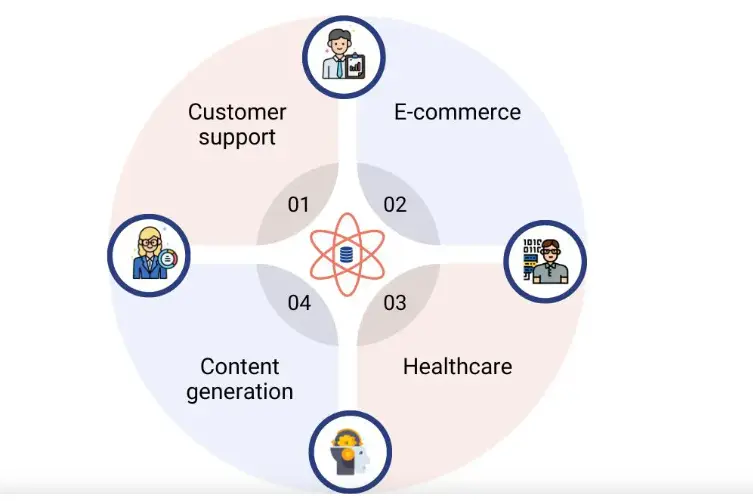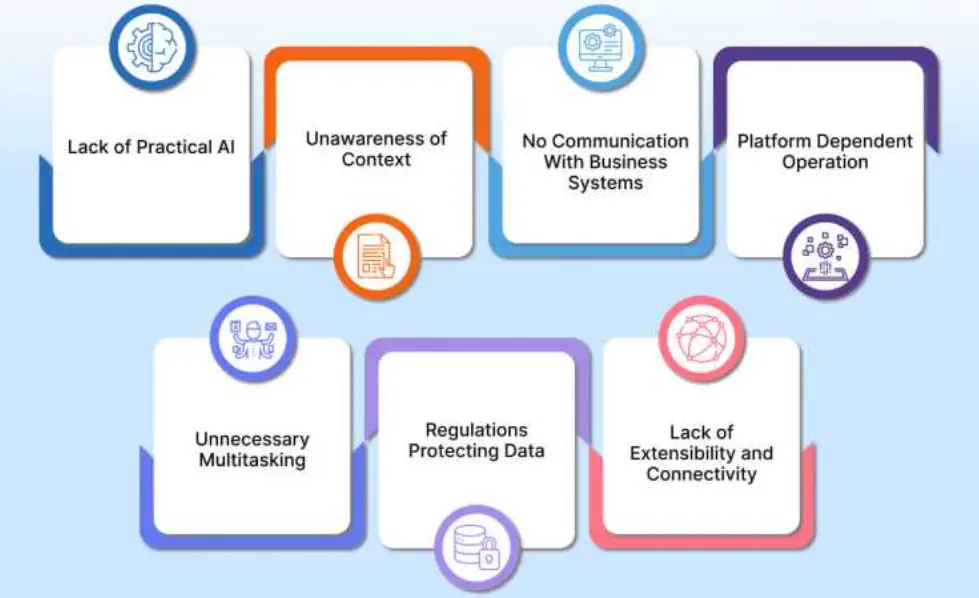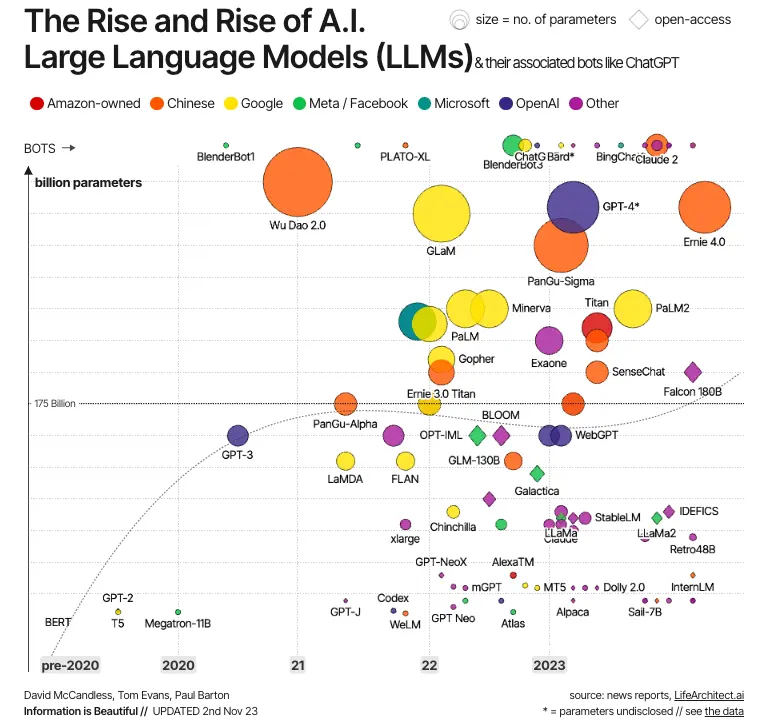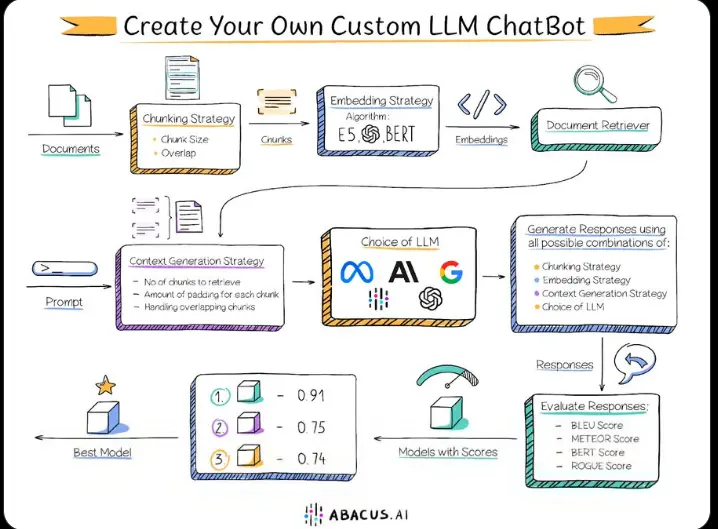Introduction
Large Language Models (LLMs) are sophisticated AI systems designed to produce text in a way similar to human interactions. These digital assistants are trained on massive volumes of textual data, to identify language structures and patterns, culminating in coherent replies based on context.
Learning how to train on custom data is crucial for developing custom LLM models for chatbots that can provide accurate and context-specific responses tailored to your business needs.
As LLMs evolve further, they offer great opportunities for better user experiences and smoother, more engaging conversations. In this blog, we will see how to use LLM models, their benefits and limitations, and how to train LLM on custom data for chatbots.
How to Use LLM Models
You can learn how to use LLM models by following these steps:
Understanding Capabilities: Know what LLMs can do like text generation and sentiment analysis.
Choosing the Right Model: Size matters; hence consider computational needs and task complexity when selecting an LLM model.
Data Input: Provide organized information as per model training.
Generating Responses: Use prompts for generating relevant, complete text.
Fine-tuning: Tailor general models with specific domain data for particular tasks.
Integration: Integrate them with applications to enhance their performance ability.
Monitoring: Track response time, accuracy, and other performance metrics.
Continuous Improvement: Keep updating it according to user feedback to increase its adaptive capacity while optimizing performance.
Following these steps will allow you to learn how to use LLM models to drive productivity and enhance user experience across various applications. Once you have understood that, you must note its key benefits.
Benefits of LLM-powered Chatbots

Understanding how to use LLM models is not enough, There are numerous ways how LLM powered chatbots help improve customer interactions, making them much more streamlined and enjoyable:
Availability: They are available 24/7, providing support whenever you need it. Whether it’s late at night or during a busy workday.
Efficiency: Answering several inquiries at a time, hence faster response times and less waiting time.
Consistency: Every time you ask the same question, it gives the same answer to ensure reliability and truthfulness in its responses.
Engagement: Using natural language or even humor in some cases, makes interactions more interactive and more conversational
Personalization: They can remember your preferences as well as previous interactions you’ve had with them. As such, they will use all of this knowledge when crafting their personalized responses to make sure that they value and understand you.
Scalability: It allows more interactions without sacrificing quality thereby solving queries promptly during peak hours.
Cost-Effectiveness: The need for human customer service agents is reduced by this technology hence companies can save money on staff costs which may be passed on to customers as either improved service or lower prices.
Multitasking: They Can help with different activities like answering questions or guiding through step-by-step processes keeping things smooth while ensuring multitasking.
Suggested Reading: Understanding Custom LLM Models: A 2024 Guide
Limitations of Generic LLMs in Chatbots

Although generic Large Language Models (LLMs) have been pivotal in enhancing chatbot capabilities, some limitations could affect the efficiency and relevance of interactions. Some of the major constraints for ordinary large language models deployed in chatbot applications are outlined below:
Lack of domain-specific knowledge: Generic LLMs know a little about a lot. But when it comes to specifics; say medicine tips or tech issues; specialized training is indispensable here.
Difficulty understanding context and nuance: Do you ever find that some conversations have a sort of “it depends” feel? It has been seen that generic LLMs fail to consider the big picture and the subtleties, which result in answers that might not hit the nail on the head.
Generic responses that lack personalization: Sometimes it seems like talking to a generic LLM is akin to conversing with an extremely polite robot, who makes robotic responses. To make the chat more personable, these LLMs will require more information about you.
The Rise of Custom LLM Models for Chatbots

The rise of custom Large Language Models (LLMs) for chatbots is a major step forward in digital communication which allows for human-like and meaningful interactions between man and machine.
This transformation capitalizes on breakthroughs in natural language processing (NLP), machine learning, and data analytics resulting in greater accuracy and relevance as far as chatbots are concerned.
How to Build and Implement Custom LLM Models for Chatbots

Building and implementing custom Large Language Models (LLMs) for creating artificial human interaction through chatbots requires a systematic approach to leveraging AI capabilities.
Here is how one can craft an execution plan for building intelligent models:
Data Gathering and Preparation: Collect relevant datasets, including conversations and domain-specific information, ensuring they are clean and well-structured.
Choosing the Right LLM Architecture: You need an architecture based on the available computational resources and the complexity of tasks, e.g., a transformer model such as GPT-3 or LSTM model.
Infrastructure Setup: Prepare computational infrastructure including frameworks like TensorFlow, and PyTorch among others needed for model development and deployment purposes.
Integration with Chatbot Platform: Ensure smooth inclusion of your LLM into your overall chatbot platform or application environment.
How to Train LLM on custom data for chatbots
How to train on custom data is a critical skill for data scientists aiming to build AI systems that can adapt to unique industry-specific challenges.
You can follow these specific steps to understand how to train LLM on custom data for chatbots and optimise its performance for unique domains.
Here’s an advanced approach on how to train LLM on custom data effectively:
Data Preprocessing and Augmentation: Clean up and preprocess the data removing noise, and augmented with more relevant data to improve model robustness.
Transfer Learning: Begin with pre-trained models and fine-tune them using area-specific datasets to speed up learning and increase performance.
Hyperparameter Tuning: Set different hyperparameters (e.g., learning rate, batch size) for better model fitting efficiency and faster convergence.
Validation and Iteration: Run cross-validation techniques on the trained model then refine it based on metrics of performance or user feedback in an iterative manner.
Ensemble Methods: Blend multiple LLM models or variations of these to exploit different strengths hence improving overall predictive accuracy and reliability.
By integrating these advanced training techniques, companies can enhance the effectiveness of their custom LLM models for chatbots to achieve specific operational goals, resulting in superior user experiences.
Measuring the Success of Custom LLM models for chatbots
Monitoring key performance indicators (KPIs) and analyzing user engagement are crucial steps toward ensuring that custom LLM models for chatbots work well.
This is how one may evaluate whether your custom LLM models for chatbots are good enough:
Define Key Performance Indicators (KPIs): Come up with measures like response time, response accuracy, and users’ satisfaction levels to track the performance of your custom LLM models for chatbots.
Track Performance Metrics: Ensure that your custom LLM models for chatbots operate in accordance with set KPIs by regularly tracking how it performs vis-a-vis it to achieve optimal end-user experiences.
Analyze User Engagement: Through listening to users’ feedback as well as examining interaction patterns, we can see how effectively our LLM chatbots meet their expectations/needs.
Iterative Improvement: Use insights gathered from performance metrics and user feedback to iteratively improve the LLM chatbots, enhancing their capabilities over time.
By establishing sound measurement frameworks and continually fine-tuning your custom LLM models for chatbots you can make them effective in meeting user requirements and contributing towards business objectives.
Benefits of Custom LLM Models for chatbots
Custom LLM models for chatbots significantly enhance chatbot functionality, making it possible for them to be highly efficient digital assistants. Here are some notable benefits:
Enhanced Relevance: Custom LLM model for chatbots give very accurate responses depending on the domain to ensure that users get the information they want at the right time.
Contextual Understanding: These models are best suited for understanding complex language as well as context, which results in more meaningful and precise interactions.
Personalized Experiences: Custom LLM for chatbots offer a personal touch by remembering user preferences and providing answers that suit individual needs or interests.
By implementing custom LLM models for chatbots, businesses can create chatbots that not only understand the intricacies of their specific industry but also engage users in a more personalized and effective manner.
This increases user satisfaction, boosts engagement, and ultimately creates better overall experiences.
Why use custom LLM Models for Chatbots?
Custom Large Language Models (LLMs) are transforming the capabilities of chatbots, enhancing their ability to understand and interact with users on a deeper level. Here’s how custom LLM models for chatbots significantly elevate chatbot functionality:
Enhanced Language Understanding: Custom LLM models for chatbots excel in deciphering complex language structures and nuanced expressions. They adeptly handle intricate sentences and diverse vocabulary, ensuring accurate and contextually appropriate responses.
Personalized User Experiences: These tailored models personalize interactions by learning user preferences and behaviors. Imagine a chatbot that remembers your food preferences or favorite hobbies, creating conversations that resonate with each user individually.
Adaptability to User Context: Custom LLM models for chatbots dynamically adjust responses based on conversation context and user history. They can anticipate user needs and provide relevant information or assistance proactively.
Improved Engagement and Satisfaction: Custom LLM models for chatbots enhance user engagement and satisfaction by delivering more relevant and engaging interactions. Users feel understood and valued, fostering trust and loyalty towards the chatbot.
Scalability and Efficiency: These models streamline operations by automating responses to a wide range of queries with high accuracy. They reduce human intervention requirements while maintaining consistency in service delivery.
Continuous Learning and Improvement: Custom LLMs evolve through continuous learning from new data and user interactions. They adapt to changing trends and user preferences, ensuring they remain effective and up-to-date.
Thus, you can use you can figure out how to train LLM on custom data to transcend basic functionalities, offering personalized, intuitive, and responsive interactions that enhance user experiences across various domains and industries.
Conclusion
Ultimately, by mastering how to train on custom data, developers can create custom LLM models for chatbots that deliver more relevant and precise answers, leading to improved customer satisfaction.
How to train LLM on custom data is about making life a tad easier and more interesting. They're learning from every chat and question and getting better at helping us. With eyes on those report cards (KPIs) and ears open to feedback, they're on a growth journey.
Businesses aiming to enhance their customer service with AI should understand how to train on custom data to build custom LLM models for chatbots that can handle complex queries with personalized interactions.
So, whether you're curious about how to train LLM on custom data or how to use LLM models, remember it's all part of giving our chatbot friends a bit of our human spark.
Frequently Asked Questions (FAQs)
How to use LLM models effectively?
You can figure out how to use LLM models effectively by defining clear objectives, selecting suitable training data, fine-tuning parameters, integrating them into existing systems, and improving performance based on real-world feedback.
Why use custom LLM models for chatbots?
Custom Large Language Models tailor the chatbot's responses to your business's tone, language, and specific needs, enhancing user experience and the relevancy of interactions.
How do custom Large Language models improve user engagement?
They provide more accurate, context-aware, and personalized responses, encouraging users to interact longer and more effectively with the chatbot.
Why is it important to know how to train on custom data for custom LLM models for chatbots?
Understanding how to train on custom data is important because it allows you to create finely tuned chatbots to your specific use case, providing more accurate and relevant responses to users.
Will a custom Large Language model integrate with my existing systems?
Custom Large Language models are typically designed to integrate with existing business systems, providing seamless communication and data synchronization.
What challenges might I face when learning how to train on custom data?
Challenges may include collecting sufficient quality data, ensuring that the data is representative, avoiding overfitting, and managing computational resources effectively during the training process.

